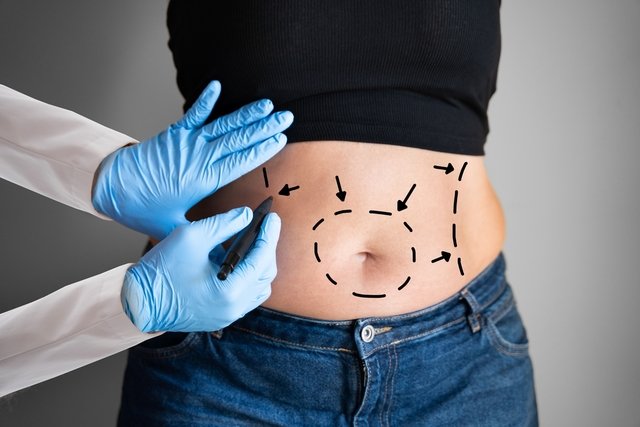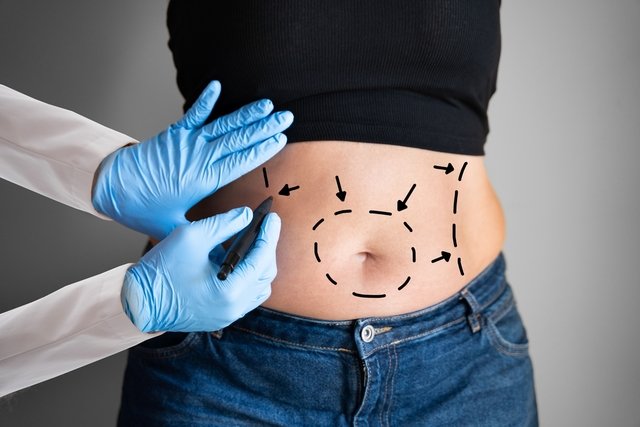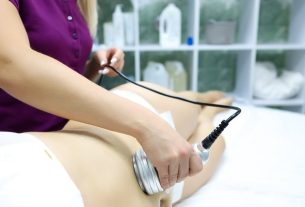Just like any surgery, abdominoplasty presents risks, especially when it is performed with other types of surgical procedures, which may cause fluid accumulation in the scar, bruising and fibrosis, for example. However, it is possible to avoid complications when post-operative recommendations are followed, such as using a brace, sleeping on your back and avoiding physical exertion, for example.
Abdominoplasty is plastic surgery on the belly performed with the aim of removing fat and excess skin, helping to reduce sagging of the belly and leaving it smooth, hard and without stretch marks, if any. Understand how abdominoplasty is performed.

The main risks of abdominoplasty include:
1. Accumulation of fluid in the scar
The accumulation of liquid in the scar is called seroma and generally happens when the person does not use the belt, which makes the body have more difficulty draining the excess liquid naturally produced after plastic surgery.
What to do: It is recommended to wear the belt for as long as the doctor recommends, which is generally 2 months, and during this period the belt should only be taken off to take a shower, and then put back on again. You should also walk with your torso leaning forward and always sleep on your back.
In addition, you should also do around 30 sessions of manual lymphatic drainage to completely eliminate excess fluids. It is normal at the beginning that a larger amount of liquid will come out, which can be seen with the naked eye, but over time the amount will decrease, but even so, the result of the surgery will be better after these 30 sessions.
2. Crooked scar or excess skin
This is closely linked to the surgeon’s experience and the more experience he has, the lower the risk of having an ugly or very visible scar.
What to do: It is recommended to choose a good plastic surgeon, recommended by people close to you who have already carried out the procedure and it is essential that he or she is accredited by the Brazilian Society of Plastic Surgery, if the procedure is carried out in Brazil.
3. Bruises on the abdomen
The presence of bruises in the abdomen is more common when abdominoplasty and liposuction are performed together, because passing the cannula under the skin can rupture small blood vessels, which allow it to leak, forming purple marks that become clearly visible on the skin. some people’s skin.
What to do: It is normal for the body to eliminate bruises due to liposuction, but the doctor may prescribe some ointment to apply to the most painful areas.
4. Fibrosis formation
Fibrosis is when hardened tissue forms in the places where the liposuction cannula passed, being a form of defense for the body. This hardened tissue can form the appearance of small elevations in the abdomen, compromising the results of plastic surgery.
What to do: To prevent it from forming, lymphatic drainage after surgery is essential, but after this tissue is already formed, it is necessary to undergo treatment with dermatofunctional physiotherapy, with devices such as micro currents, radiofrequency and manual therapy to even out the skin and break it down. the sites of fibrosis.
5. Surgical wound infection
Surgical wound infection is a rarer complication of plastic surgery, which occurs when the doctor, nurses or patient do not have the necessary hygiene to care for the scar, allowing the entry and proliferation of germs. The area should form pus and have a strong smell, compromising the results of the surgery.
What to do: If the cut site is red, has pus or has a bad smell, you should go to the doctor as soon as possible to resolve the infection with the use of antibiotics.
6. Loss of sensitivity
It is very common after any surgery for people to have less skin sensitivity to touch in areas close to the scar and where the liposuction cannula passed. However, as the months go by, sensitivity returns to normal.
What to do: Massages in areas with less sensitivity are a good strategy to solve this problem, and can be done using techniques such as kneading, pinching, small taps or temperature variations, for example.
7. Thrombosis or pulmonary embolism
Thrombosis and pulmonary embolism are considered the most serious risks and complications of any surgery and occur when a blood clot forms inside a vein and then passes through the blood vessels and reaches the heart or lung, preventing air from reaching that location. .
What to do: To avoid the formation of thrombi, it is recommended that women stop taking contraceptives 2 months before surgery and after the operation they should take anticoagulants, such as Fraxiparin, 8 hours after surgery, for at least 1 week and always move their feet when they are lying or sitting during the rest period. To avoid thrombosis and other bleeding, you must also stop taking certain pharmaceutical and natural remedies before surgery.
When to go to the doctor
It is recommended to see a doctor if you experience the following signs or symptoms:
- Difficulty breathing;
- Fever;
- The pain does not go away with the painkillers prescribed by the doctor;
- The dressing is completely stained with blood or is yellow or wet;
- The drain is full of liquid;
- Feeling pain in the scar or if it has a bad smell;
- If the surgery site is hot, swollen, red or painful;
- Being pale, lacking strength and always feeling tired.
It is essential to consult a doctor, as you could be developing a serious complication that could put the patient’s safety and life at risk.

Sign up for our newsletter and stay up to date with exclusive news
that can transform your routine!
Warning: Undefined array key "title" in /home/storelat/public_html/wp-content/plugins/link-whisper-premium/templates/frontend/related-posts.php on line 12
Warning: Undefined array key "title_tag" in /home/storelat/public_html/wp-content/plugins/link-whisper-premium/templates/frontend/related-posts.php on line 13




